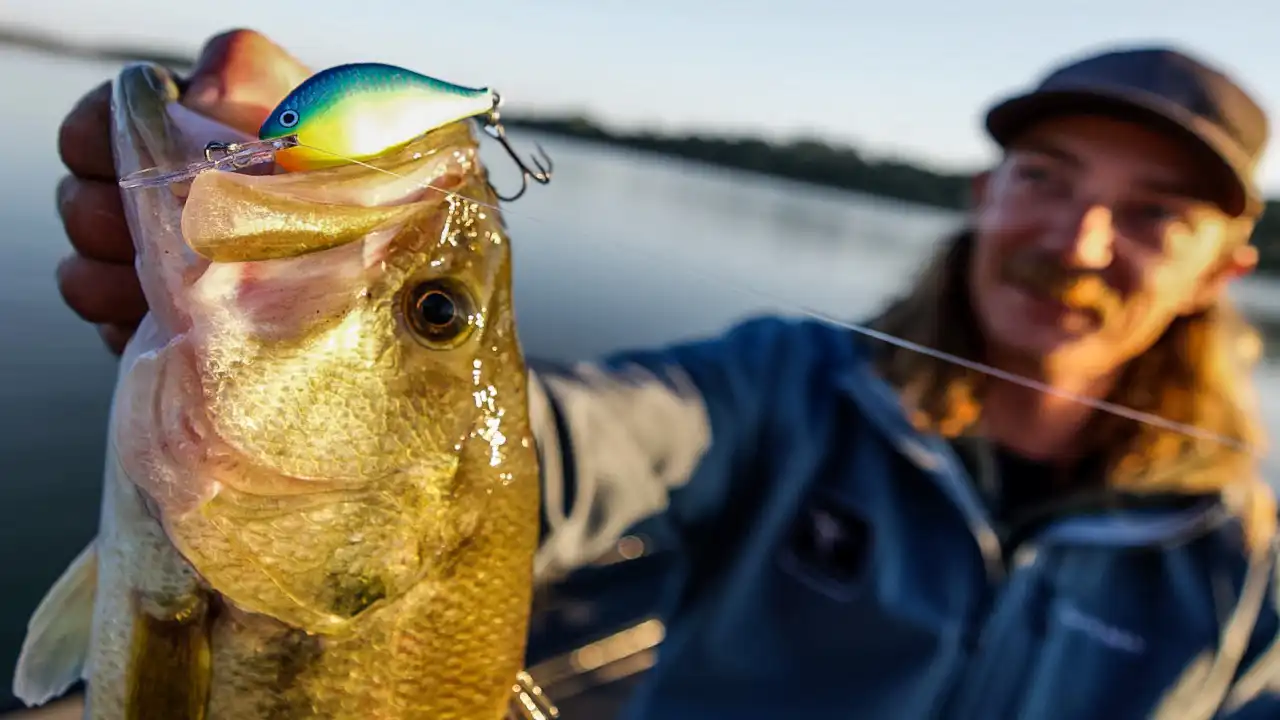Pro bass angler Seth Feider dives deep into the nuanced world of how to fish crankbaits in weeds for summer bass. Sparing no details, he teaches how to cleanly fish crankbaits around grass patches while still trigging reaction strikes. Tickling the grass is a delicate balance that requires a knowledge of grass characteristics and choosing the right bait for the situation.
FEATURED PRODUCT (retail links)
- CRANKBAIT – Rapala DT 8, color – Caribbean Shad: Buy at Omnia Fishing, Buy at Bass Pro Shops
- ROD – Daiwa Tatula Glass Spinnerbait, Bladed Jig, model – TU741HRB-G: Check out at Daiwa
- REEL – Daiwa Tatula 150 Casting Reel, model – TAT150HSL: Check out at Daiwa
- LINE – Sufix Advance Fluorocarbon, 12-pound: Buy at Omnia Fishing, Buy at Bass Pro Shops
- PLIERS – Rapala Stainless Steel Pliers, 6-1/2”: Buy at Bass Pro Shops
- FISH FINDER – HELIX 12 CHIRP MEGA DI+ GPS G4N: Buy at Omnia Fishing, Buy at Bass Pro Shops
- 360 SONAR – Humminbird MEGA 360 Imaging Transducer – Ultrex: Buy at Omnia Fishing, Buy at Bass Pro Shops
- TROLLING MOTOR – Minn Kota Ultrex i-Pilot Link MEGA-DI/SI Sonar Trolling Motor: Buy at Omnia Fishing, Buy at Bass Pro Shops
As Feider discusses, crankbaits are excellent bluegill imitators in fisheries rich in bluegills and other panfish. Key to his approach is matching crankbait running depth to the height of the grass. Color can be a factor, too, with hues of chartreuse and blue resembling bluegills.
Grass cranking retrieves significantly from traditional hard-bottom cranking, where driving the bait into the bottom is the norm. Feider uses a slower retrieve and rod angle adjustments to prevent burying crankbaits in the cover. Choosing the right bass fishing crankbait helps too. Buoyant and tighter wiggling balsa crankbaits are best, such as the Rapala DT (Dives-to) Series. A tighter wiggle reduces the bill and hooks from catching grass, while a fast-rising bait clears the cover better on the pause.
Feider’s unique approach centers around maintaining a consistent running depth for the bait and methodically reeling and stopping — mirroring the tactics used with a Carolina rig. This strategy becomes even more crucial when worming the crankbait around dense clusters of coontail grass.
A heavier power glass rod paired with a fast reel and strong 12- to 14-pound fluorocarbon provides the right blend of “give” and power to keep treble hooks buttoned and horse fish clear from the cover. In this case, his go-to ChatterBait rod doubles as an ideal grass-cranking stick.












